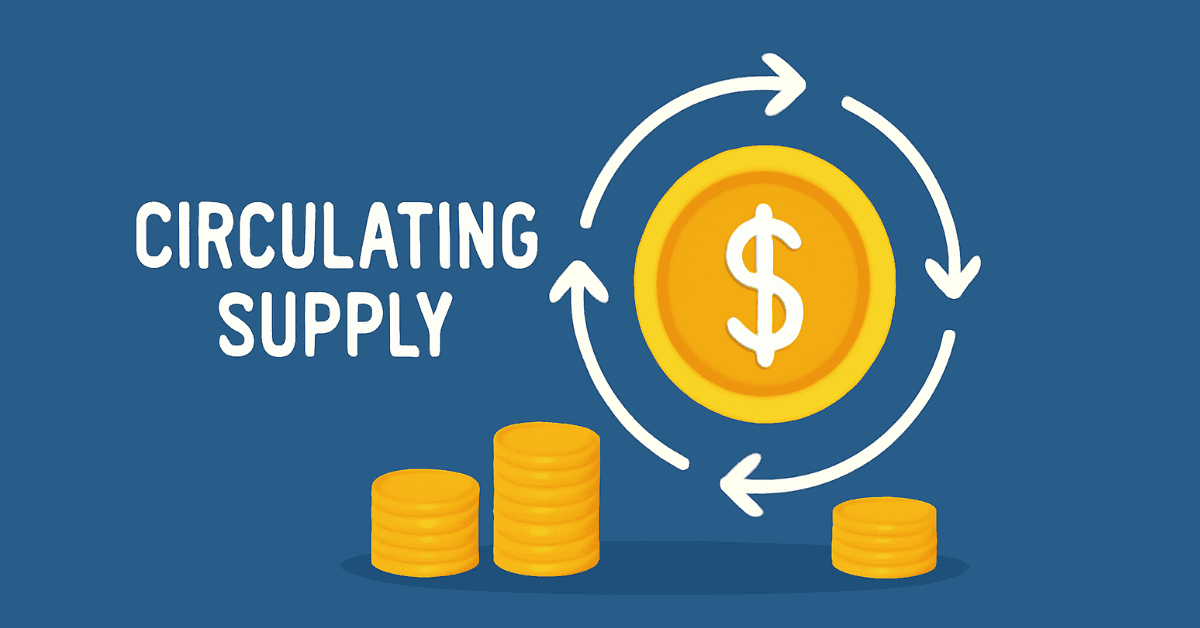
Circulating Supply: Key To Understanding Crypto Markets
1. What Is Circulating Supply?
Circulating Supply refers to the total number of coins or tokens currently available and actively traded in the market. This is the amount of digital currency that users can buy, sell, or exchange on trading platforms. Grasping this concept is crucial for assessing the value and potential of a digital asset project.
2. Why Is Circulating Supply Important?
Circulating supply plays a vital role in helping investors and those interested in the digital asset space better understand the intrinsic value and growth potential of a cryptocurrency. It is also used to calculate the market capitalization of a cryptocurrency, which is a key indicator for determining the size of a project. The formula for market capitalization is:
Market Capitalization = Circulating Supply × Current Coin Price
A cryptocurrency with a large circulating supply can have a higher market capitalization, even if its per-coin price is lower compared to another digital asset with a smaller circulating supply but a higher per-coin price. A large circulating supply also helps attract investors and guards against speculative activities, thereby enhancing the trustworthiness of the digital currency. Furthermore, it aids in comparing and evaluating the growth potential among different digital assets, helping investors make informed decisions.
3. Examples Of Circulating Supply Changes And Their Impact
- Ethereum: Does not have a fixed supply limit like Bitcoin. New Ethereum is created whenever a block is mined, increasing its circulating supply annually. This supply increase could lead to inflation if demand does not keep pace. However, mechanisms like EIP-1559 (which burns a portion of transaction fees) have adjusted the supply growth rate, helping to maintain its value.
- Tether (USDT): Issues USDT based on the amount of fiat currency deposited into its reserves. When demand for USDT increases, Tether issues more to meet this demand. An increase in USDT supply typically reflects growth in the demand for using stablecoins for transactions and storing value. While this does not reduce USDT's value (as it is pegged to USD), further issuance can raise debates about Tether's transparency.
4. Circulating Supply Versus Total Supply
Circulating supply is distinct from total supply. Total supply includes all coins that have been issued or will be issued in the future, whereas circulating supply only counts the number of coins currently being traded in the market.
Examples: Bitcoin has a total supply of 21 million units, but its current circulating supply is approximately 19 million units. Ethereum does not have a total supply limit, but its circulating supply changes based on transactions and block rewards.
5. Impact Of Circulating Supply On Price
Circulating supply can directly influence the price of a cryptocurrency, adhering to the law of supply and demand:
- Increased Supply, Constant Demand: When circulating supply increases without a corresponding rise in demand, the value of the coin may decrease due to a larger number of coins with unchanged demand.
- Decreased Supply, Constant or Increased Demand: When circulating supply decreases or demand increases, the value of the coin may rise due to fewer coins or higher demand.
Circulating supply also affects scarcity. A coin with a low circulating supply becomes scarcer, which can lead to a price increase if demand is high. For example, Bitcoin's fixed total supply of 21 million units contributes to its high value due to scarcity.
6. Factors Affecting Circulating Supply
- New Issuance: When new coins are created through mining or issuance, the circulating supply increases, potentially putting downward pressure on prices if demand does not rise.
- Coin Burning: Some projects implement coin burning to reduce the circulating supply, thereby increasing the value of the remaining coins.
Information regarding new issuance or coin burning can influence market sentiment, leading to significant price volatility due to investor reactions.